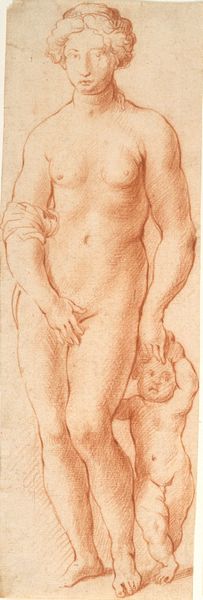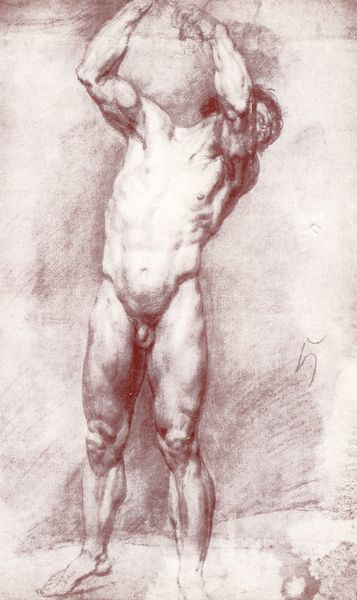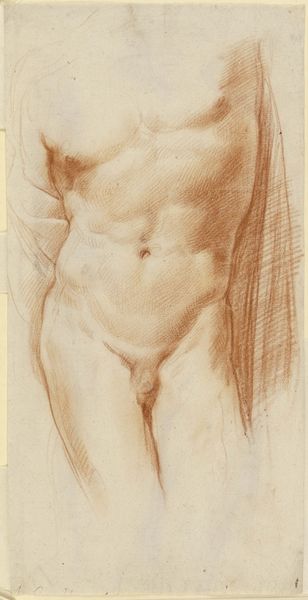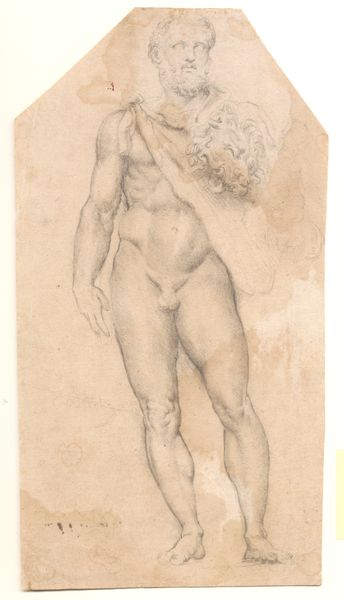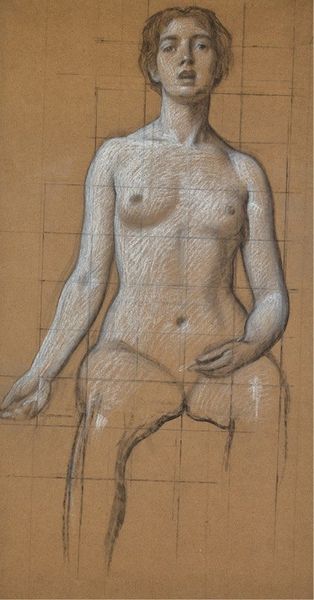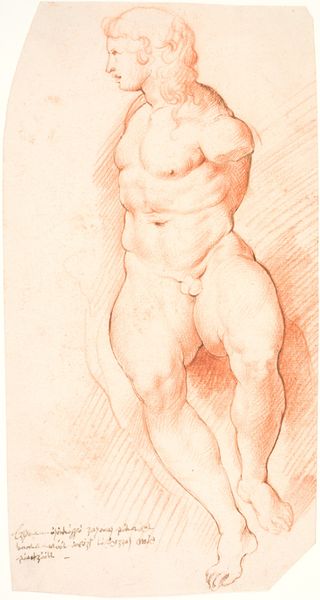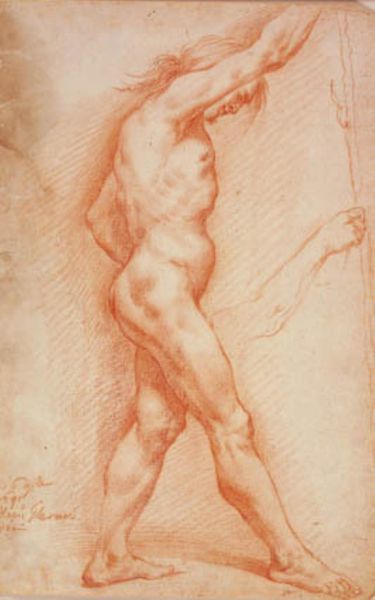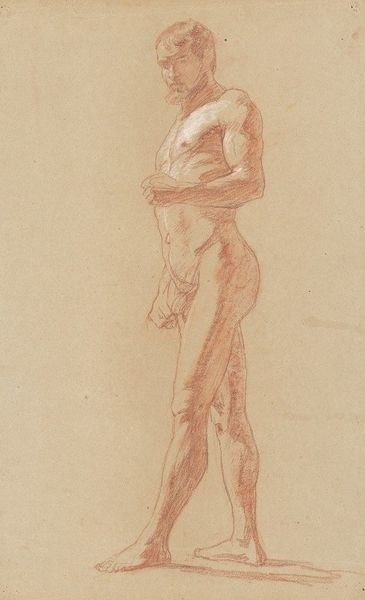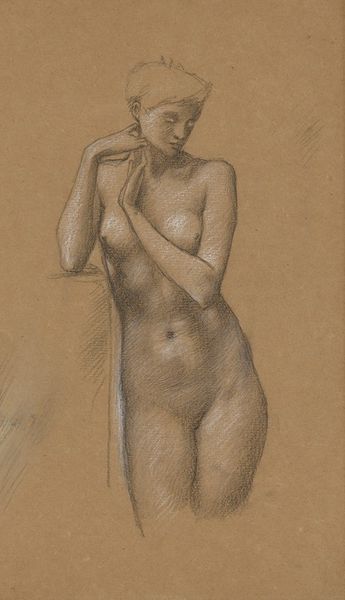
Venus og Amor. Georg Petels skulpturgruppe set drejet halvt mod højre 1628 - 1630
0:00
0:00
drawing, dry-media, charcoal
#
drawing
#
baroque
#
charcoal drawing
#
figuration
#
dry-media
#
charcoal
#
history-painting
#
nude
Dimensions: 281 mm (height) x 104 mm (width) (bladmaal)
Curator: What we have here is a drawing attributed to Willem Panneels, dating from between 1628 and 1630. It’s titled "Venus og Amor. Georg Petels skulpturgruppe set drejet halvt mod højre"—that's "Venus and Amor: Georg Petel's Sculpture Group Seen Turned Half Right." It’s currently housed here at the SMK, the Statens Museum for Kunst. Editor: The first thing that strikes me is the red chalk. It's incredibly tactile—you can almost feel the artist’s hand moving across the page, pressing harder in some areas to define form. There is a roughness in its execution and also quite subtle modeling, with Venus seemingly emerging out of the paper’s rough graininess. Curator: Indeed. Panneels seems to have been particularly interested in capturing the physicality and process of sculpting. Here he's focusing on Petel's sculptural group. It is intriguing how the act of copying itself serves to amplify not only Petel’s but also Panneels’ labour. It highlights the act of artistic production—the skill and effort involved in creating and replicating. Editor: I think that Panneels’ choice of material enhances this idea of labour and physicality even more, doesn’t it? Chalk itself has this immediate quality. The lines seem spontaneously made as if directly pulled from his observation and engagement with the sculpture. It seems almost subversive to the refined elegance one usually sees depicting Venus and Cupid. Curator: The choice of subject also speaks volumes about the status of artists and the cultural values of the time. Classical mythology, such as Venus and Amor, held incredible prestige, often commissioned by elite patrons who wanted their values reflected. I suppose, in Panneels rendering, even that can be seen by some as labour, however valued, as opposed to just inspiration. Editor: Yes, it creates an interesting dialogue. The drawing becomes a testament not just to skill, but to the broader systems in which it was made and the different societal understandings of artistry in the Baroque period. We see echoes of these societal tensions in art markets even today. Curator: Looking closely at Panneel’s piece provides fascinating insights into the processes and context within art production itself. Editor: And beyond mere reproduction, reveals that the act of translation by drawing or rendering highlights that materiality is itself imbued with multiple layers of context.
Comments
No comments
Be the first to comment and join the conversation on the ultimate creative platform.
